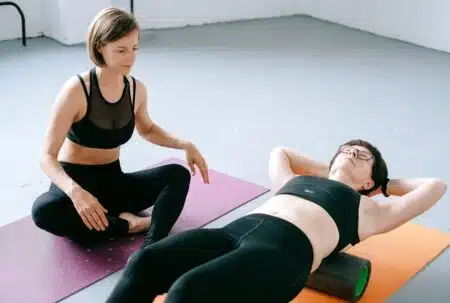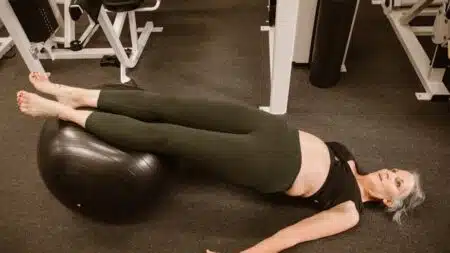Vulvodynia is a complex and often misunderstood medical condition that causes chronic pain and discomfort in the vulva region. An estimated 16% of women will experience vulvodynia at some point in their lives. This complex chronic vulvar pain condition still confounds both patients and physicians alike with its ambiguous origins and protean symptoms that mimic other disorders.
Yet decoding the mystery of vulvodynia through a nuanced, multidisciplinary lens finally brings answers and hope of resolution to those suffering. This article provides a comprehensive overview of vulvodynia, including up-to-date information on the latest research into causes, an in-depth exploration of symptoms, as well as both traditional and alternative vulvodynia treatments.
What is Vulvodynia?
Vulvodynia is a chronic, unexplained pain or discomfort of the vulva. The vulva includes the labia, clitoris, vaginal opening and the area around these regions, all of which can be affected by vulvodynia symptoms. Women with vulvodynia typically endure symptoms for at least three months with no identifiable cause.
Types of vulvodynia
There are two main types of vulvodynia:
- Generalized Vulvodynia: Discomfort may be experienced throughout the entire vulval region including the labia, clitoris and vaginal entrance, which is commonly referred to as the vestibule.
- Localized Vulvodynia: Also called vestibulitis or vestibular adenitis, pain may confined to one specific region such as the vaginal entrance.
While rarely life-threatening, moderate to severe cases greatly reduce quality of life. Depression frequently accompanies the condition given painfully disrupted intimacy. However research now better elucidates potential causes and treatments.
Stats on Prevalence
Current studies estimate around 16% of women will experience this condition during their lifetime. Vestibulodynia specifically impacts almost 20% of premenopausal females. Age of onset peaks between 20 to 50 years old.
Yet despite high incidence rates, many endure symptoms for years before diagnosis. Embarrassment discussing sensitive genital issues creates reluctance mentioning problems. Lack of awareness among both patients and physicians that conditions such as vulvodynia exist, and that they can manifest in varying levels of pain during sexual intercourse, often delays help-seeking.
Common Symptoms of Vulvodynia
Vulvodynia may manifest as hallmark indicators centered around vulval sensitivity. Pain levels vary hugely from temporary irritation flaring with triggers like sex or tight clothes, to more constant, severe discomfort greatly limiting daily movements.
While variable between patients, main symptoms include:
- Burning, stinging or soreness ranging from mild to excruciating
- Rawness, aching or irritation around the vaginal opening
- Sharp, knife-like pain or throbbing sensations
- Swelling of vulval structures
- Discomfort in the vagina when walking, sitting, wearing tight pants or inserting tampons.
- Pain during intercourse or difficulty achieving orgasm
Symptoms may be mild or severe, such as pain in the external female genital area, and eventually contribute to anxiety and depression. It often creates substantial intimacy and self-esteem issues. However, emerging insights – such as the efficacy of physical therapy or cryoneurolysis as methods of treatment – now instill hope via expanding treatment options.
What Causes Vulvodynia?
Medical science still cannot pinpoint any singular cause of vulvodynia. However, research hints at a variety of interplaying factors increasing susceptibility:
- Genetics & Family History – Studies reveal having a mother or sister with vestibulodynia elevates personal risk of developing the condition nearly eightfold. Autoimmune diseases also hold higher comorbidity with chronic vulvar pain.
- Hormonal Shifts – Estrogen draws associations with vestibular area structures thickening and tightening in vestibulodynia patients. Taking oral contraceptives before initial intercourse or while nulliparous also heightens prevalence.
- Recurring Infections – Sustaining multiple vaginal yeast infections or battling urinary tract infections may sufficiently damage vulvovaginal tissues and embedded nerve fibers. Slow infection clearance enables sustained inflammation too.
- Allergies & Skin Disorders – Contact dermatitis, psoriasis or lichen sclerosis trigger immune responses that could theoretically rewire neurological pain processing similar to nerve damage.
- Muscular Issues – Pelvic floor or vaginal muscles may spasm, tighten or lose strength with aging, menopause or childbirth. This reduces healthy blood circulation intensifies nerve irritation.
- Neurological Factors – Overactive fibers may bombard the brain with amplified vulvar pain signals far surpassing injury levels. Alternatively, vulvodynia could arise from impaired pain modulation inhibition processes in the central nervous system.
Seeking a Correct Diagnosis
Gaining an accurate diagnosis first requires ruling out other causes of genital pain through exams and testing. Tracking symptom patterns in a journal also assists in the evaluation and can help identify correlating activities such as sexual intercourse.
- Keep Details Thorough – Don’t downplay embarrassing aspects even if seemingly unrelated. Describe all vulvodynia symptoms like pain locations, triggers, relieving factors plus impacts on relationships, work and life. Even seemingly irrelevant information helps assess root causes.
- Undergo Diagnostic Testing – Visual inspection during a pelvic exam checks for skin changes suggesting dermatological causes. Microscope analyses and cultures identify infections. Biopsies check for inflammatory conditions or anatomical abnormalities.
- Define Pain Characteristics – Q-tip touch sensitivity maps test if certain nerves overreact when prodded. Define precise locations, texture, severity, duration and pain types using descriptive terminology.
Early intervention with appropriate treatment greatly improves prognosis and quality of life. Misdiagnosing vulvodynia as yeast infections or generic inflammation of the vagina often delays recognizing the true, neurological origins. Finding an empathetic gynecologist knowledgeable about complex pain conditions remains key.
Traditional Vulvodynia Treatments
- Medications – Anticonvulsants like Gabapentin or tricyclic antidepressants help modulate nerve activity. Topical anesthetics temporarily numb discomfort during intimacy.
- Pelvic Floor Therapy – Strengthening pelvic muscles using kegel exercises, biofeedback or vaginal dilators retrains nerves and reduces spasms.
- Surgery – Severing overactive vestibular nerve fibers near the vaginal opening offers lasting pain relief for some with severe localized vulvodynia untreated by other methods.
Holistic and Alternative Therapies
Various lifestyle measures, which may help, also demonstrate efficacy in resolving symptoms without medications.
- Diet Modification – Eliminating common dietary irritation like gluten, corn, soy or inflammatory vegetable oils calms immune responses. Yeast cleanses treat overgrowth.
- Stress Reduction – Meditation, yoga, talk therapy and counseling equip patients manage psychological responses and neurological aspects of pain.
- Acupuncture – Fine needle insertion releases natural pain relief endorphins, boosts blood flow and potentially repatterns nervous system signaling.
Emerging Experimental Treatments
Exciting therapeutic advances now provide further options for stubborn vulvodynia cases:
- Stem cell injections to rebuild damaged nerve cell coatings
- Platelet-rich plasma derived growth factors to repair irritated vulvar tissues
- Radiofrequency nerve ablation to block upstream pain signal transmission
- Cryoneurolysis temporarily freezing malfunctioning localized nerves
- Topical cannabidiol creams reducing inflammation and pain
While displaying initial promise, more controlled research remains necessary to confirm efficacy and pinpoint optimal protocols. Consult vulvodynia specialists regarding accessibility, costs and managing expectations when utilizing experimental approaches.
Vulvodynia Home Remedies
Despite expanding medical options, vulvodynia still proves challenging for patients and partners. Useful home coping strategies include:
Seeking Out Support Groups
Online forums, in-person networks and therapists help sufferers feel less alone. Share advice and provide encouragement through difficult journeys.
Communicating Needs Openly
Explain to partners how symptoms create mood changes, fatigue and wax and wane libido. Scheduling non-sexual intimacy that feels safe can also benefit pelvic floor muscles.
Applying Self-Care Basics
Use of cold packs, cotton underwear, gentle cleansing and OTC numbing creams around the vagina may help manage vulvodynia flare ups. Partaking in warm Epsom salt baths can result in increased relaxation and relief of pressure on your vulva.
Prioritize mental health support via counseling or peer groups. While initially devastating, today’s therapeutic insights offer brighter prospects for reducing vulvodynia burdens over time.
Take Away
In conclusion, vulvodynia is a complex condition that doesn’t have a clear cause and can result in pain in your vulva. The symptoms and causes can vary from person to person, making it difficult to pinpoint a single treatment. However, a combination of treatments such as medication, physical therapy, and counseling can help manage the pain associated with the condition. It’s important to seek medical advice if you experience pain that lasts for months or have questions about your symptoms. By working with healthcare professionals, you can find a personalized approach to managing and treating your pain.



